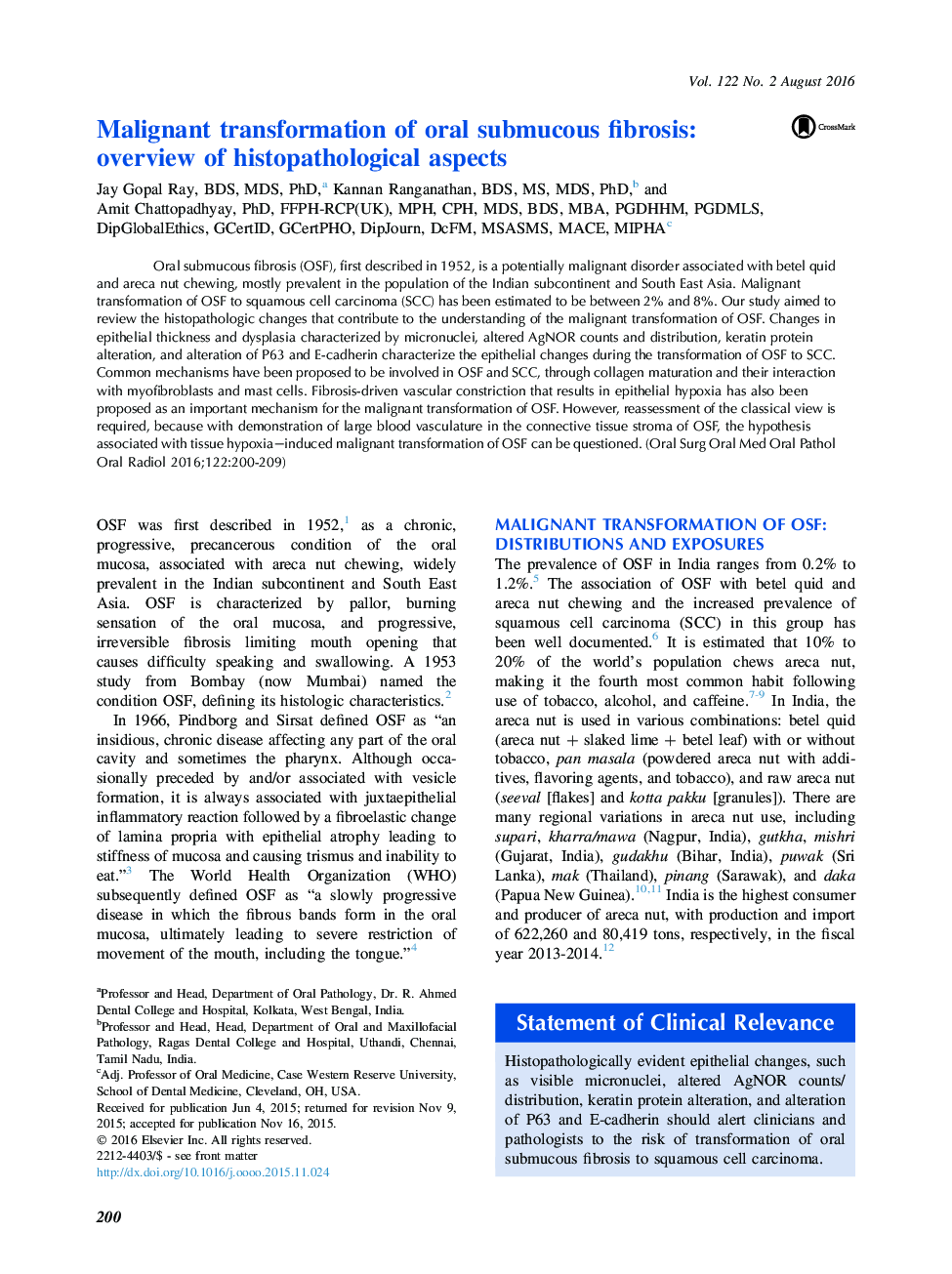| Article ID | Journal | Published Year | Pages | File Type |
|---|---|---|---|---|
| 3166374 | Oral Surgery, Oral Medicine, Oral Pathology and Oral Radiology | 2016 | 10 Pages |
Oral submucous fibrosis (OSF), first described in 1952, is a potentially malignant disorder associated with betel quid and areca nut chewing, mostly prevalent in the population of the Indian subcontinent and South East Asia. Malignant transformation of OSF to squamous cell carcinoma (SCC) has been estimated to be between 2% and 8%. Our study aimed to review the histopathologic changes that contribute to the understanding of the malignant transformation of OSF. Changes in epithelial thickness and dysplasia characterized by micronuclei, altered AgNOR counts and distribution, keratin protein alteration, and alteration of P63 and E-cadherin characterize the epithelial changes during the transformation of OSF to SCC. Common mechanisms have been proposed to be involved in OSF and SCC, through collagen maturation and their interaction with myofibroblasts and mast cells. Fibrosis-driven vascular constriction that results in epithelial hypoxia has also been proposed as an important mechanism for the malignant transformation of OSF. However, reassessment of the classical view is required, because with demonstration of large blood vasculature in the connective tissue stroma of OSF, the hypothesis associated with tissue hypoxia–induced malignant transformation of OSF can be questioned.
